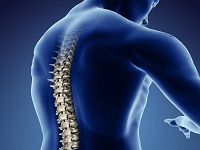Article
COPD and Smoking Are Tied to Increased Risk of Osteoporosis, Fractures
Author(s):
Current osteoporosis guidelines don't recommend screening for men. However, researchers from National Jewish Health have identified men's smoking history and chronic obstructive pulmonary disease (COPD) as risk factors for osteoporosis and fractures of the vertebrae.

Current osteoporosis guidelines don’t recommend screening for men. However, researchers from National Jewish Health have identified men’s smoking history and chronic obstructive pulmonary disease (COPD) as risk factors for osteoporosis and fractures of the vertebrae.
Despite research linking smoking to osteoporosis, neither smoking history nor COPD are considered when weighing which candidates are eligible for bone-density screening, according to a statement released by National Jewish Health.
For their study published online in the Annals of the American Thoracic Society, investigators analyzed computed tomography (CT) scans of 3,321 current and ex-smokers to determine bone density. The participants were aged from 45 to 80, and smoked at least 10 packs a year.
From their assessment, the investigators found male smokers were at greater risk for having low bone density (- 2.5 SD below young adult mean by calibrated quantitative CT) with 55% of this studied demographic having low bone density.
Although low volumetric bone mineral density was seen in 58% of all participants, COPD severity also predicted low bone mineral density — as 84% of patients with very severe COPD are affected.
While vertebral fractures were found in 60% of male smokers and 37% of patients, COPD and emphysema predicted the fractures, specifically of the mid-thoracic region.
“Our findings suggest that current and past smokers of both genders should be screened for osteoporosis,” the study’s contributor, Elizabeth Regan, MD, an assistant professor of medicine at National Jewish Health said in a news release. “Expanding screening to include men with a smoking history and starting treatment in those with bone disease may prevent fractures, improve quality of life and reduce health care costs.”




